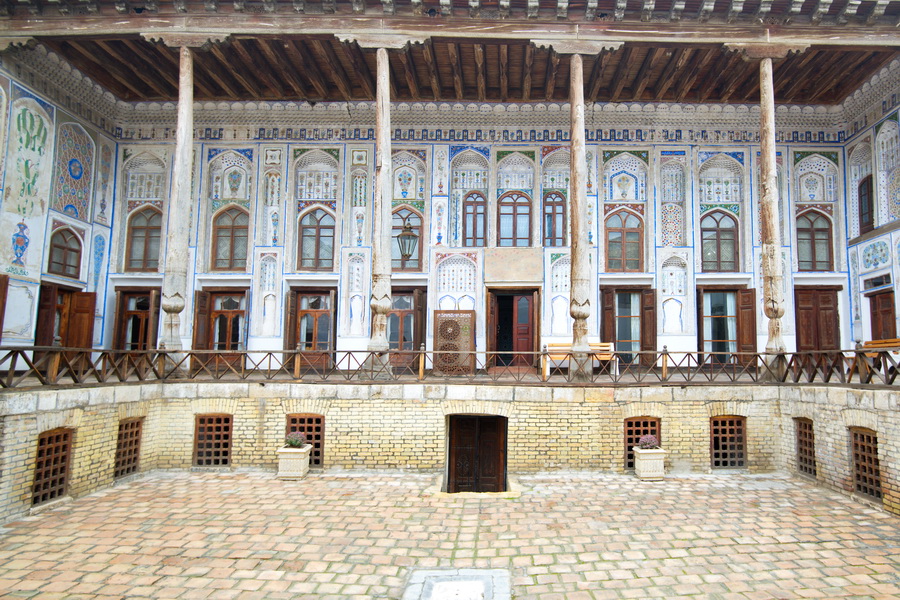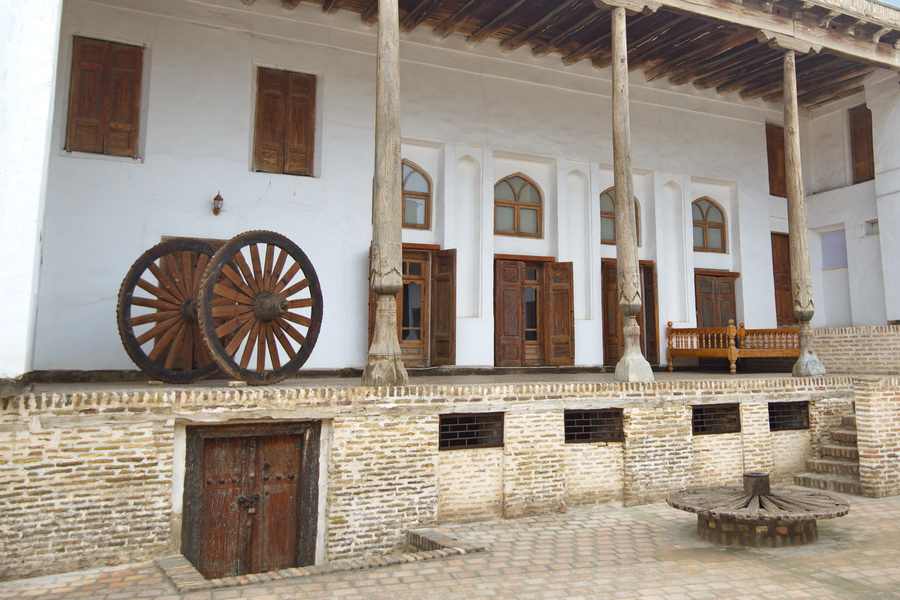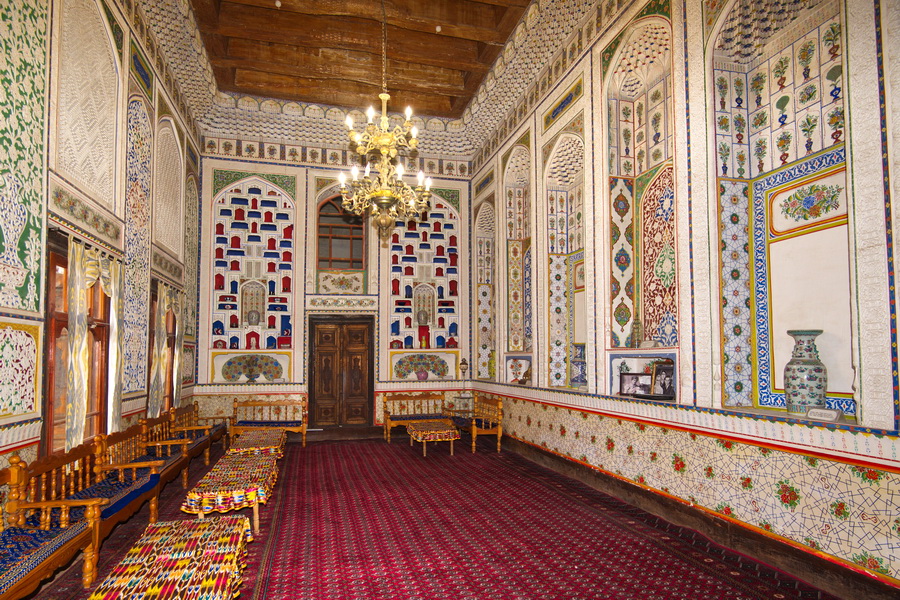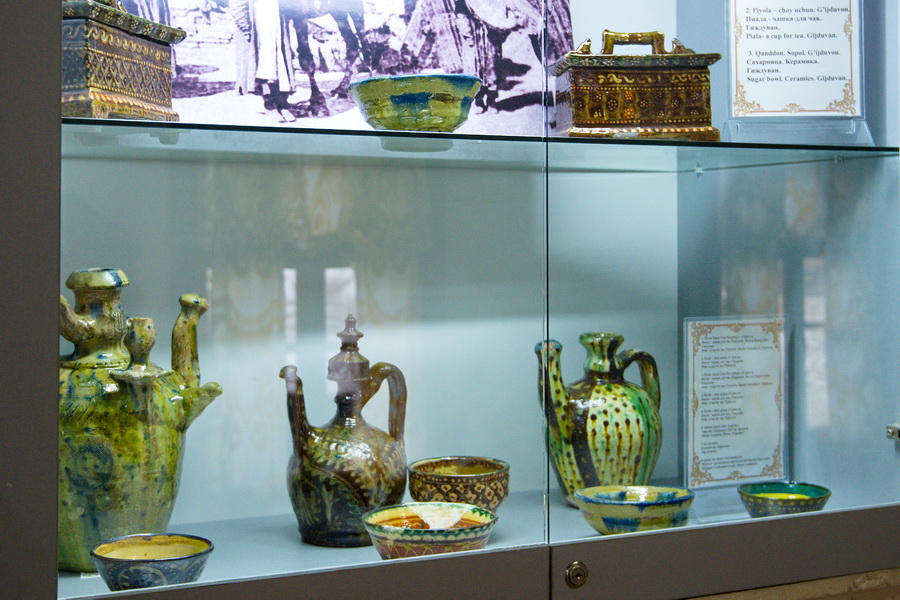House Museum of Fayzulla Khodjaev, Bukhara

Address: 70, A. Tukay str., Bukhara
Phone: (+998 90) 711-93-99
Working hours: from 09.00 a.m. to 06.00 p.m. (in low season from 09.00 a.m. to 05.00 p.m.)
Day off: no days off
The House Museum of Fayzulla Khodjaev is a splendid example of 19th-century Bukhara architecture, a unique building that has become a true pearl of the city. Just one kilometer away from Bukhara's primary attractions, nestled in the ancient Gozion district, it remains relatively obscure to the masses, making it an enticing destination for connoisseurs of history and architecture.

Fayzulla Khodjaev was an outstanding statesman and reformer who played a significant role in the history of Central Asia. Born in 1896 into the family of a wealthy Bukhara merchant specializing in astrakhan fur (karakul), he became one of the leaders of the national liberation movement in the early 20th century. Khojaev participated in the activities of the Young Bukharians movement, which was founded on the principles of Jadidism (Islamic modernism), spoke out against the power of the emir and for reforms in culture and education. From 1920 to 1924, after the overthrow of the last emir of Bukhara, Sayyid Alim Khan, he led the government of the Bukhara Soviet People's Republic and held high positions in the regional administration for the following 13 years. Khodjaev's reformist activities covered wide areas of social life: from science and education to industry and economics. However, during the Stalinist repressions, he became a victim of political persecution and was shot in 1938.
Visiting the house museum provides a rich understanding of Fayzulla Khodjaev's life and the time he lived in. The museum’s exposition not only reveals his contribution to history, but also demonstrates the complex socio-economic structure of Bukhara at that time.

The building exemplifies traditional Bukhara architecture infused with elements of luxury typical of the houses of wealthy citizens of the 19th century. Constructed of fired brick, it is richly decorated with frescoes and tile mosaics. The main attraction of the house is a large ayvan, a wide terrace bordered by wooden columns. Even on hot summer days it is always fresh and cool here. The interior decor is impressively sumptuous. The interior is lavishly decorated, with every surface - from floors to ceilings - adorned with intricate paintings, carpets, suzani (embroidered textiles), lace patterns, and plant motifs. The museum exhibits themselves also serve as bright interior decoration items: furniture, dishes, vases and candlesticks, musical instruments and other rarities of the 19th - 20th centuries.
The museum's collection covers a wide range of topics related to the life of Fayzulla Khodjaev and the cultural heritage of Bukhara. The exhibits include personal belongings of the house owner, photographs, portraits and documents detailing Khojaev's political activities, as well as the tragic outcome of his life. One section, "The Life of a Rich Merchant of the 19th-20th Centuries," showcases the lifestyle of Bukhara's wealthy families, featuring antique carpets, embroidered fabrics, silverware, ceramics, and ornately decorated furniture. Particularly captivating are artifacts that highlight the region’s cultural heritage, such as musical instruments, books, and traditional costumes.

The House Museum of Fayzulla Khodjaev is more than just an architectural monument; it is a space that transports visitors into the history and everyday life of Bukhara from previous centuries. A visit to this unique place will be an unforgettable journey through time for anyone interested in the rich heritage of Central Asia.

